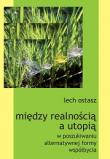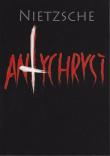 |
Chcesz wiedzieć więcej?
Zamów dobrą książkę.
Propozycje Racjonalisty: | | |
 |
|
|
 |
»
Prawdziwa historia dzisiejszego Czarnobyla [3] Author of this text: Zbigniew Jaworowski

Translation: Aleksandra Jasiulewicz
W wielu publikacjach można przeczytać, że katastrofa w Czarnobylu miała wiele poważnych politycznych implikacji i stała się czynnikiem prowadzącym do rozpadu Związku Radzieckiego. Czy skutkiem wypełnienia zaleceń raportu UNDP 2000 będzie polityczne katharsis i być może rozpętanie gwałtownych reakcji? To prawdopodobnie nie odnosi się do Rosji, gdzie przeważa bardziej racjonalne podejście do sprawy Czarnobyla. Jednak klasa polityczna Białorusi i Ukrainy przez lata prezentuje bardziej emocjonalne i mniej uczciwe podejście. Kiedy zaprezentowano Generalnemu Zgromadzeniu Narodów Zjednoczonych raport UNSCEAR 2000, który dokumentował, że nie było żadnego poważnego niebezpieczeństwa dla zdrowia spowodowanego katastrofą, delegacje Białorusi i Ukrainy mocno protestowały. W wyniku tego w 2002 roku stworzono Forum Czarnobylu i protesty wpłynęły na jego pracę.
Dzisiaj, zamieszanie wokół Czarnobylu jak i związane z nim emocje, powoli cichną. W nadchodzących stuleciach, katastrofa ta zostanie zapamiętana jako dowód, że energia jądrowa jest bezpiecznym źródłem produkcji energii.
Źródła:
- A. Berrington, S.C. Darby, H.A. Weiss, and R. Doll, 2001. „100 Years of Observation on British Radiologists: Mortality from Cancer and other Causes 1897-1997." The British Journal of Radiology, Vol. 74, pp. 507-519.
- Forum, 2005. "Chernobyl's Legacy: Health, Environmental and Socio-Economic Impacts and Recommendations to the Governments of
Belarus, the Russian Federation, and Ukraine," U.N. Chernobyl Forum.
- Forum, 2006. "Health Effects of the Chernobyl Accident and Special Health Care Programmes," U.N. Chernobyl Forum, Expert Group "Health"
(EGH).
- N.A. Frigerio, K.F. Eckerman, and R.S. Stowe, 1973. The Argonne Radiological Impact Program (ARIP), Part I, "Carcinogenic Hazard from Lowlevel,
Low-rate Radiation," ANL/ES-26 Part I (Argonne, Ill.: Argonne National Laboratory).
- N.A. Frigerio and R.S. Stowe, 1976. "Carcinogenic and Genetic Hazard from Background Radiation," Biological and Environmental Effects
of Low-Level Radiation Chicago: International Atomic Energy Agency, pp. 385-393.
- GUS, 2001. Statistical Yearbook of the Republic of Poland, Vol. 61 (Warsaw: Central Statistical Office), pp. 1-734.
- H.R. Harach, K.O. Franssila, and V.M. Wasenius, 1985. "Occult Papillary Carcinoma of the Thyroid-A 'Normal' Finding in Finland. A Systematic Study," Cancer, Vol. 56, pp. 531-538.
- T. Henriksen and G. Saxebol, 1988. "Fallout and Radiation Doses in Norway after the Chernobyl Accident," Environment International, Special
Issue: The Chernobyl Accident: Regional and Global Impacts, Guest Editor Zbigniew Jaworowski, Vol. 14, No. 2, pp. 157-163.
- V.K. Ivanov, A.F. Tsyb, S. Ivanov, and V. Pokrovsky, 2004. "Medical Radiological Consequences of the Chernobyl Catastrophe in Russia," NAUKA,
St. Petersburg, pp. 1-387.
- L.E. Ketchum, 1987. "Lessons of Chernobyl: SNM members try to decontaminate the world threatened by fallout. Experts face challenge of educating
public about risk and radiation." J. Nuclear Medicine, Vol. 28, pp. 933-42.
- E.M. Parshkov, V.A. Sokolov, A.F. Tsyb, A.D. Proshin, and J.G. Barnes, 2004. "Radiationinduced Thyroid Cancer: What We Know and
What We Really Understand," Int. J. Low Radiation, Vol. 1, No. 3, pp. 267-278.
- L.S. Taylor, 1980. "Some Non-Scientific Influences on Radiation Protection Standards and Practice," 5th International Congress of the International
Radiation Protection Association, The Israel Health Physics Society, Jerusalem, pp. 307-319.
- UNDP, 2002. „The Human Consequences of the Chernobyl Nuclear Accident: A Strategy for Recovery." Chernobyl Report-Final 240102,
United Nations Development Programme (UNDP) and the U.N. Children's Fund (UNICEF) with the support of the U.N. Office for Co-ordination
of Humanitarian Affairs (OCHA) and the World Health Organization, pp. 1-75.
- UNSCEAR, 1988. Sources, Effects, and Risks of Ionizing Radiation, New York: United Nations Scientific Committee on the Effects of Atomic
Radiation.
- UNSCEAR, 2000. Sources and Effects of Ionizing Radiation. (New York: United Nations Scientific Committee on the Effects of Atomic Radiation).
- L. Wei, Y. Zha, Z. Tao, W. He, D. Chen, Y. Yuan, 1990. "Epidemiological Investigation of Radiological Effects in High Background Radiation Areas of
Yangjiang, China. J. Radiat. Res., Vol. 31, pp. 119-136.
Tekst opublikowany pierwotnie w piśmie 21st Century Science &Technology, wiosna-lato 2006.
1 2 3
« (Published: 19-08-2008 Last change: 02-06-2013)
Zbigniew Jaworowski Professor Zbigniew Jaworowski is the chairman of the Scientific Council of the Central Laboratory for Radiological Protection in Warsaw. In the winter of 1957-1958, he measured the concentration of CO2 in the atmospheric air at Spitsbergen. During 1972 to 1991, he investigated the history of the pollution of the global atmosphere, measuring the dust preserved in 17 glaciers—in the Tatra Mountains in Poland, in the Arctic, Antarctic, Alaska, Norway, the Alps, the Himalayas, the Ruwenzori Mountains in Uganda, and the Peruvian Andes. He has published about 20 papers on climate, most of them concerning the CO2 measurements in ice cores.
Number of texts in service: 9 Show other texts of this author
Newest author's article: Co nie będzie dyskutowane w Kopenhadze na szczycie o ograniczeniach emisji CO2 |
All rights reserved. Copyrights belongs to author and/or Racjonalista.pl portal. No part of the content may be copied, reproducted nor use in any form without copyright holder's consent. Any breach of these rights is subject to Polish and international law.page 6020 |
 |




 Professor Zbigniew Jaworowski is the chairman of the Scientific Council of the Central Laboratory for Radiological Protection in Warsaw. In the winter of 1957-1958, he measured the concentration of CO2 in the atmospheric air at Spitsbergen. During 1972 to 1991, he investigated the history of the pollution of the global atmosphere, measuring the dust preserved in 17 glaciers—in the Tatra Mountains in Poland, in the Arctic, Antarctic, Alaska, Norway, the Alps, the Himalayas, the Ruwenzori Mountains in Uganda, and the Peruvian Andes. He has published about 20 papers on climate, most of them concerning the CO2 measurements in ice cores.
Professor Zbigniew Jaworowski is the chairman of the Scientific Council of the Central Laboratory for Radiological Protection in Warsaw. In the winter of 1957-1958, he measured the concentration of CO2 in the atmospheric air at Spitsbergen. During 1972 to 1991, he investigated the history of the pollution of the global atmosphere, measuring the dust preserved in 17 glaciers—in the Tatra Mountains in Poland, in the Arctic, Antarctic, Alaska, Norway, the Alps, the Himalayas, the Ruwenzori Mountains in Uganda, and the Peruvian Andes. He has published about 20 papers on climate, most of them concerning the CO2 measurements in ice cores.